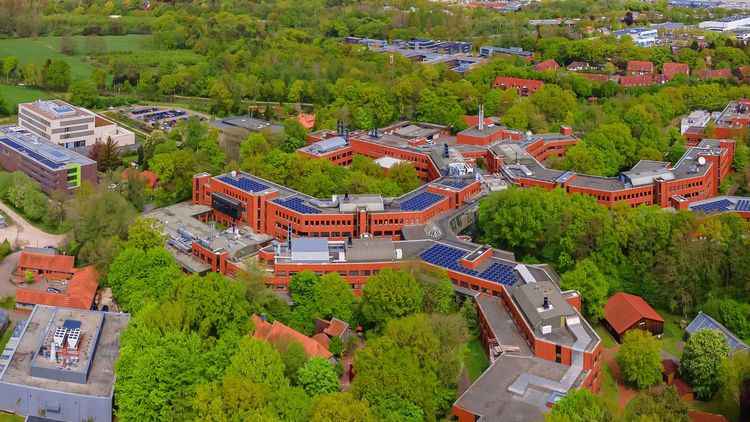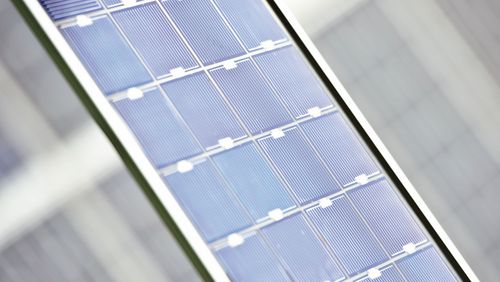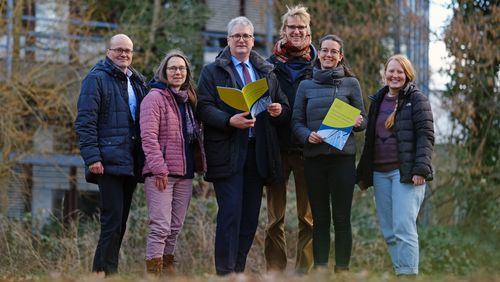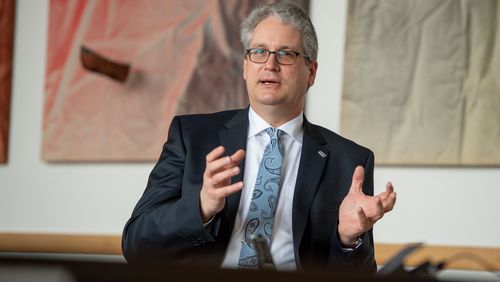Generating electricity with solar panels, applying LEDs as lighting, or using waste heat - there are many possibilities for obtaining energy from renewable sources or reducing the consumption of electricity and gas on campus. This autumn, they are more necessary than ever: Not only does the climate crisis force to take action, but the current energy crisis also puts pressure on universites.
As early as May, the university's internal crisis team began its work and took precautions to ensure that, on the one hand, possible gaps in supply do not damage important university infrastructures such as laboratories or mainframe computers and, on the other, that as much energy as possible can be saved. The goal is to reduce energy consumption by around 20 percent overall, says Meik Möllers, head of the university’s Facility Management.
One visible, albeit smaller, component of this concept may already have caught the eye of many who are on campus in the evenings: The lecture hall building A14 no longer shines with prestigious lighting. But the university has also already implemented less visible and more effective measures.
For example, the supply temperature of the heating systems in Wechloy and Haarentor has been lowered to 70 degrees Celsius. "This means we lose significantly less heat than before," says Möllers. Room temperatures in the offices have been reduced to a maximum of 19 degrees Celsius - in line with legal requirements. The water temperature of the swimming pool is also now two degrees Celsius lower than before, and two of the central systems in Wechloy that heat drinking water have been switched off. "Just by making these simple changes during ongoing operations, we save energy," Möllers says.
Towards a climate neutral university
The fact that the university has been working for several years to continually reduce its carbon dioxide emissions now comes in handy: for example, the computer centre's air conditioning systems have been renewed since last autumn. This not only enables more efficient cooling in summer, but also the use of waste heat in winter. The new large daycare center, for example, has been fitted with a modern heat pump.
And economic LEDs have long since illuminated most parts of the campus grounds. The roof of the building in Wechloy is being renewed, windows are being replaced and the ring level is also being renovated. New photovoltaic systems are being installed here and on the roof of the outdoor sports hall, as they have already been on many other building roofs.
"Overall, we are already using 80 percent of the roof surfaces that are suitable for this to generate electricity for our own needs with the help of efficient solar cells," Möllers explains. In this regard, he says, the university is at the forefront among universities in Lower Saxony and in the top ranks nationwide.
Even beyond the acute crisis, a working group - the Climate Neutral University Working Group, founded in spring 2020 following a resolution by the Senate - is committed to making the university climate neutral. By the end of 2022, the team will create an integrated climate protection concept that will serve as a strategic decision-making basis and planning aid for future climate protection activities.
University members who have further tips or ideas on how to save even more electricity or heat can send their suggestions by e-mail to - and thus help to meet the challenges of the coming winter together.




